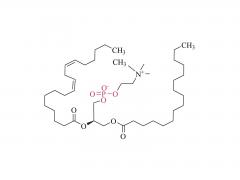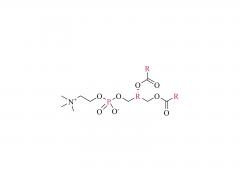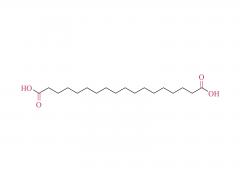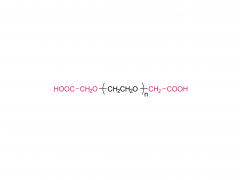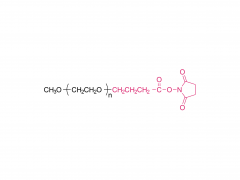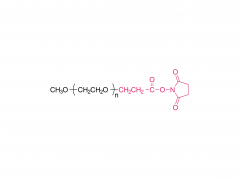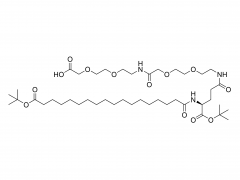Chemischer Name: Methoxypolyethylenglykolchlor
Englischer Name: mPEG-Chlorid oder mPEG-Cl
Summenformel: CH₃O-(CH₂CH₂O)ₙ-CH₂CH₂-Cl
Molekulargewichtsbereich: 350 Da bis 40.000 Da (üblicherweise 1K, 2K, 5K, 10K, 20K)
Eigenschaften: Weißer oder cremefarbener Feststoff (niedriges Molekulargewicht, kann flüssig sein)
Löslichkeit: Leicht löslich in Wasser, DMSO, DMF, THF und anderen polaren Lösungsmitteln
Die Struktur von mPEG-Cl besteht aus einer PEG-Kette mit Methoxygruppen und einer Chlormethylgruppe (-CH₂Cl) am Ende. Zu seinen Reaktionsmerkmalen gehören:
Nukleophile Substitutionsreaktion (SN₂-Reaktion):
Es kann mit primären Aminen (-NH₂) reagieren und stabile sekundäre Aminbindungen (-NH-CH₂-PEG) bilden.
Es kann unter alkalischen Bedingungen auch mit Thiolgruppen (-SH) oder Hydroxylgruppen (-OH) reagieren, die Effizienz ist jedoch relativ gering.
Reaktionsbedingungen:
Es wird üblicherweise in einer Pufferlösung mit einem pH-Wert von 8 bis 10 durchgeführt, beispielsweise einer Carbonatpufferlösung.
Zur Beschleunigung der Reaktion können organische Basen wie Triethylamin (TEA) oder DIEA hinzugefügt werden.
Selektivität: Im Vergleich zu NHS-PEG oder MAL-PEG weist mPEG-Cl eine geringere Reaktivität auf, kann jedoch unter bestimmten Bedingungen für eine stabile Kopplung verwendet werden.
3. Hauptanwendungen
(1) Biokopplung und Proteinmodifizierung
Amino-Modifikation: Es reagiert mit der ε-Aminogruppe von Lysin (Lys) von Proteinen, Antikörpern oder Peptiden, um PEG zu erhalten.
Reduzieren Sie die Immunogenität: Verlängern Sie die Halbwertszeit von Arzneimitteln und verbessern Sie die Stabilität (z. B. PEG-Interferon, Antikörper-Arzneimittel).
(2) Arzneimittelabgabesystem
Oberflächenmodifizierung mit Nanopartikeln: wie PEG von Liposomen und Polymermizellen, wodurch die Blutzirkulationszeit verbessert wird.
Kopplung kleiner Moleküle an Arzneimittel: Durch die Verknüpfung von Chloridgruppen mit aminohaltigen Arzneimitteln werden Löslichkeit und Pharmakokinetik verbessert.
(3) Materialwissenschaften
Polymerfunktionalisierung: Wird in PEG-modifizierten Hydrogelen, Beschichtungsmaterialien usw. verwendet, um die Biokompatibilität zu verbessern.
Oberflächenchemie: Modifizierte Goldnanopartikel, Kieselgel usw. zur Reduzierung der unspezifischen Adsorption.










